This is the second in a series of posts focusing on different elements of the 12 Church Grove self-build, with the hope of sharing the learnings and challenges. Much progress has been made at 12 Church Grove since the self builders began on site in January. The ‘shell flats’ are becoming more like homes.
Self build allows for some ‘self design’ and personalisation by the residents – something which makes resident-led design and build projects so unique and impactful. One early decision was whether or not to install a suspended ceiling.
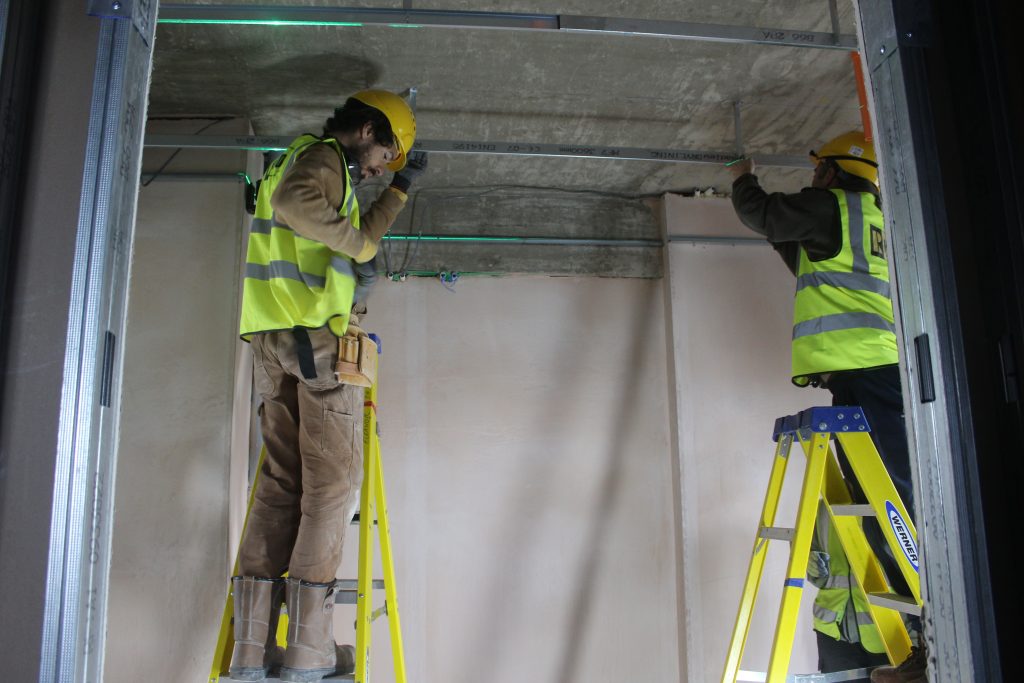
Residents could opt to construct a suspended, metal-framed ceiling (as in the other flats in the 12 Church Grove development) or to create an alternative solution to concealing services. Each option brings challenges: whether it is the precision required in suspending a new ceiling or the aesthetic work to make a feature of the exposed concrete ceiling.
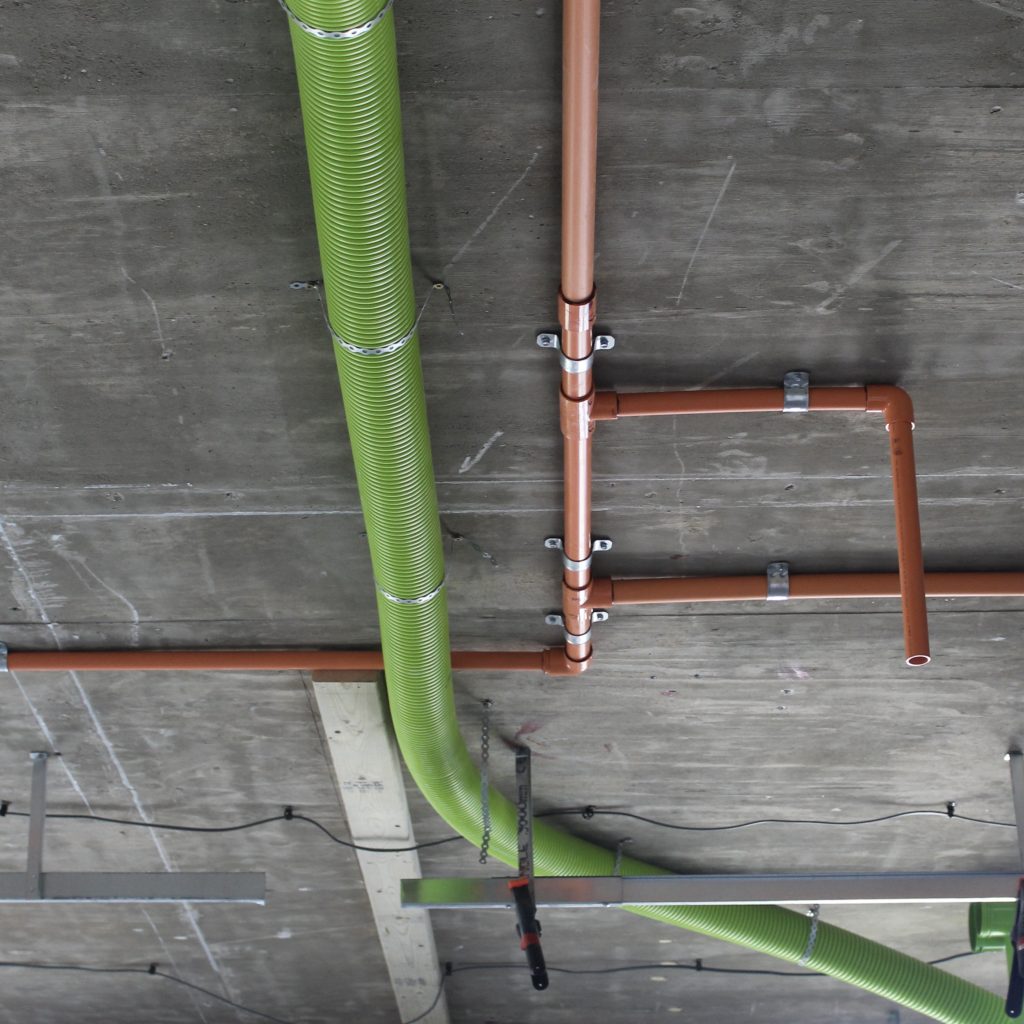
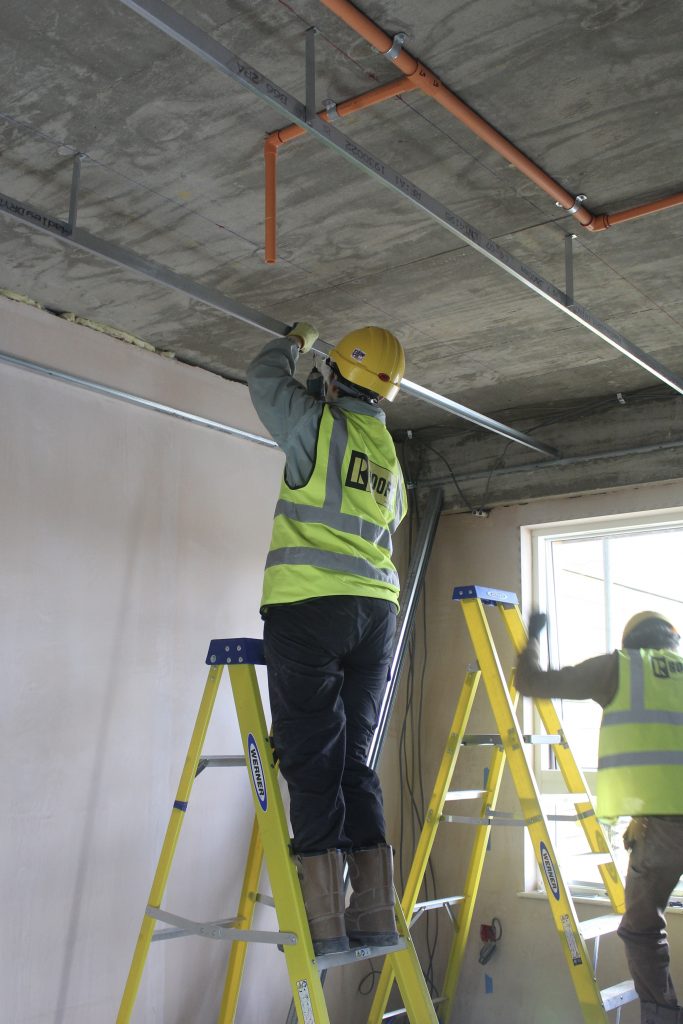
Where choosing a suspended ceiling allows for flexibility in cable routing, the accuracy of structural rail installation to hold the plasterboard and allow for positioning of vital services (such as MVHR and sprinkler systems) is everything. Additionally, constructing a flat and level plane to form the ceiling has proven to be a process requiring great patience.
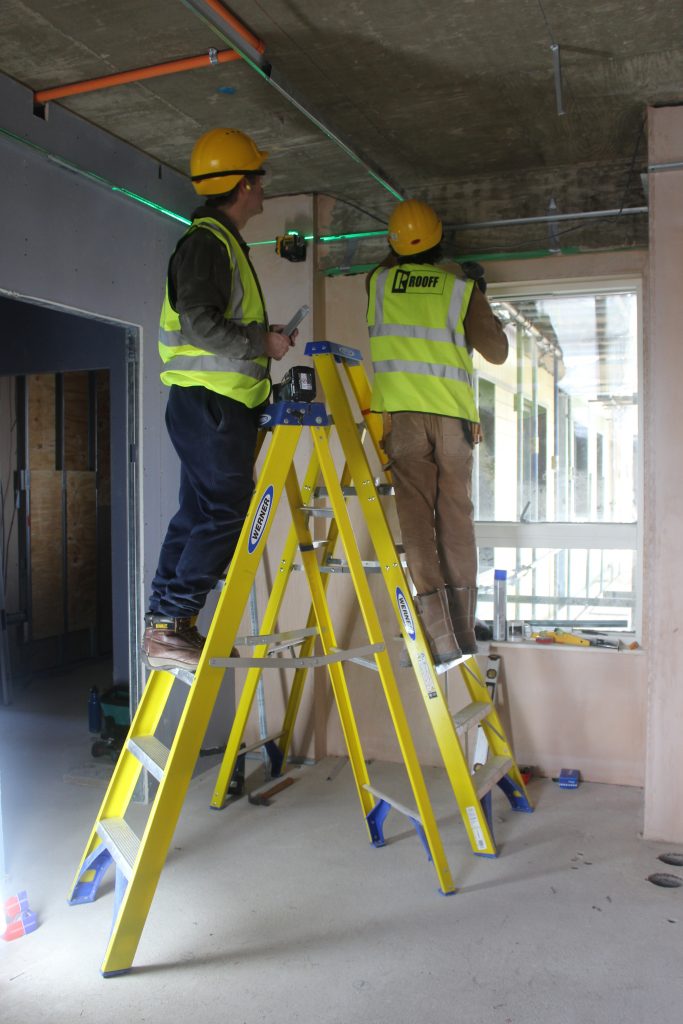
This was a moment where the power of teamwork and collaboration within self-build has been integral. The residents have been working together within different flats to put up the ceiling structure using lasers. This began in Kareem and Amalia’s flat. Working at height is time intensive and so by collaborating the set up and installation process for the suspended plasterboard has been made easier. Despite being an onerous task, I think most residents would agree that as room by room and flat by flat the ceilings are completed, a great feeling of accomplishment and ‘home’ has been created.
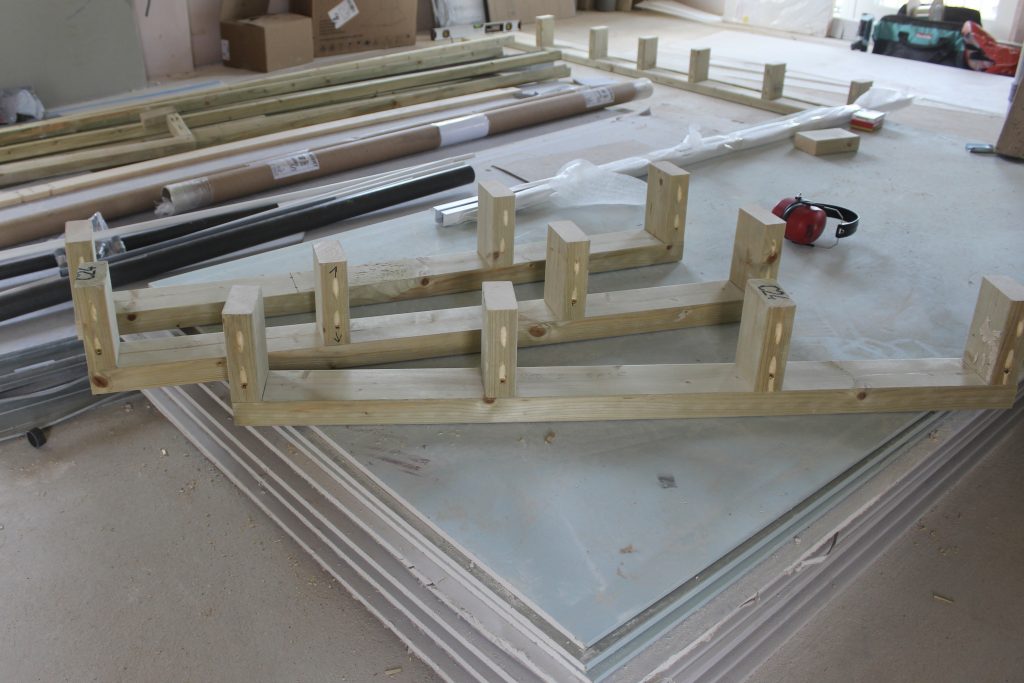
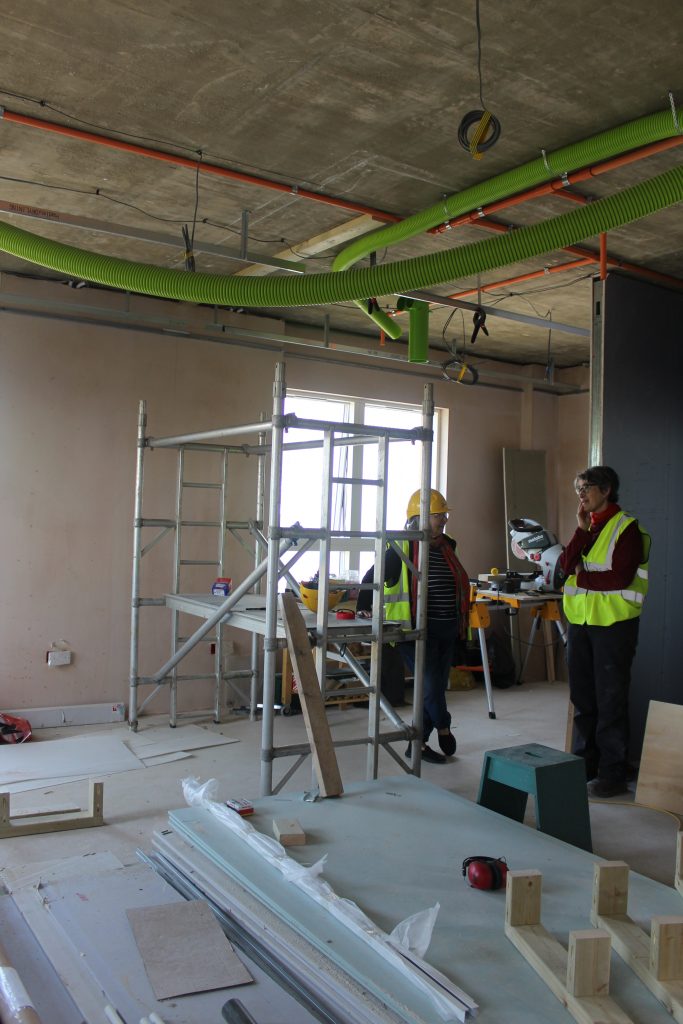
The alternative option of exposing the raw concrete ceiling could at first be seen as a somewhat easier process and while this may be true in terms of construction, the design considerations for services has been a task in planning of coordination and aesthetic finishing.
Organising the pipe and wire routes alongside integrating this within the visual design was crucial if the residents were to expose the ceiling and ‘leave all to bare’.
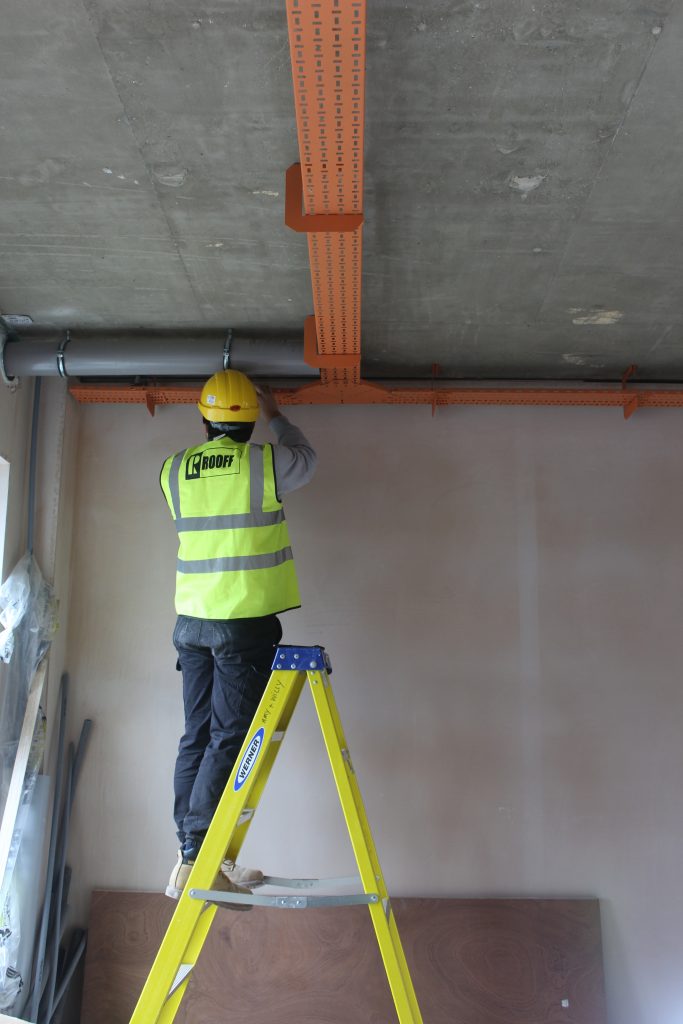
Amy + Will have chosen to leave the ceiling exposed. To make a feature out of the services, they have installed a cable tray which runs around the edge of the flat, sprayed orange to match the sprinkler system. The ventilation pipes will also be finished in orange, creating a cohesive language for the practical essentials of the flats. This will act as an everlasting reminder of the task of self-build.
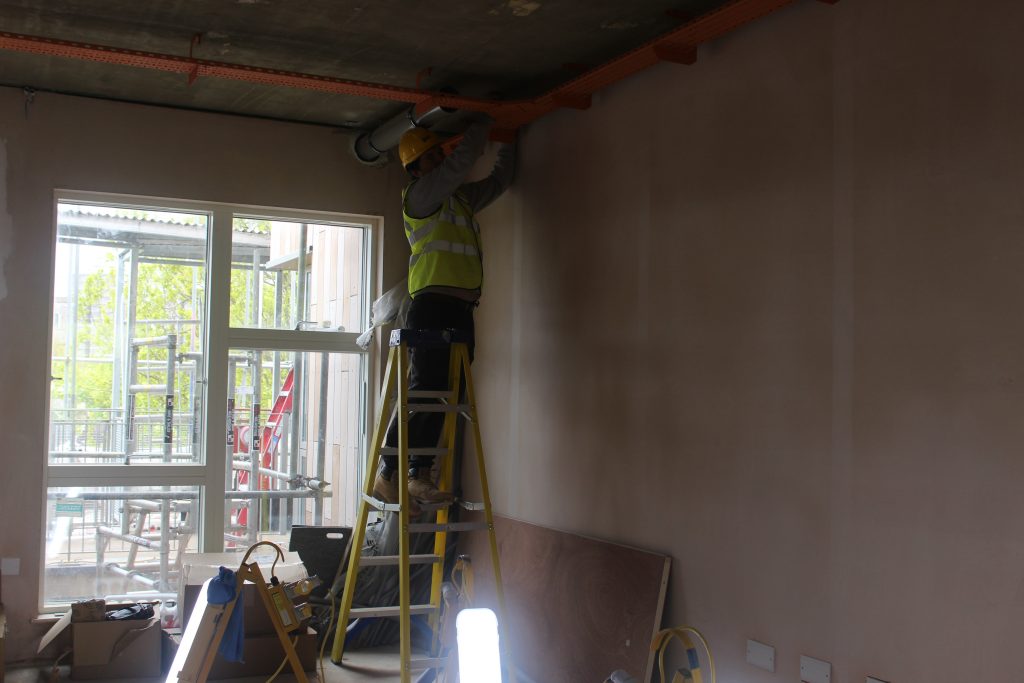
Likewise, Matt + Jess have also opted to retain the full height of their open plan flat, but instead of making a feature of the services, they have chased the electrical conduits into the head of the walls, giving a more discreet finish.
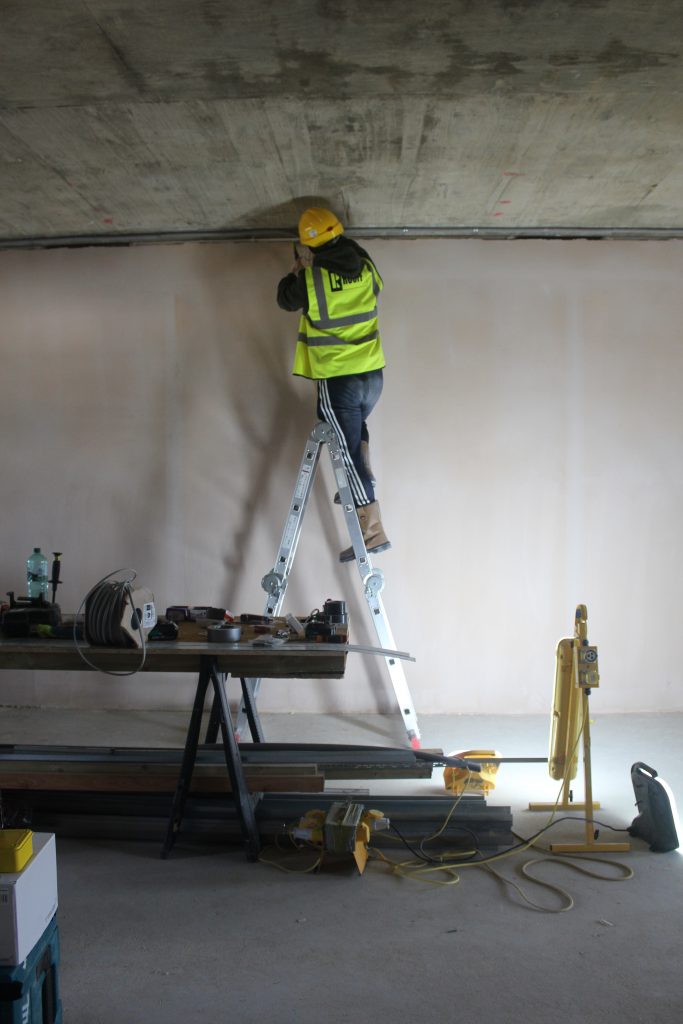
Check in soon for another update to the Work in Progress at 12 Church Grove as we follow the self builders in their development of partition walls, services and more.
